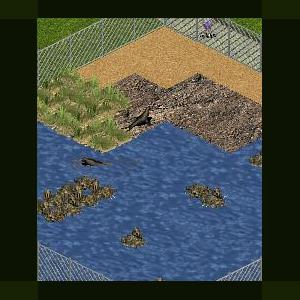About This File
Genus: Zalophus
Species: californianus wollebaeki
Identification:
There are three subspecies of Zalophus californianus. The California sea lion (Z. c. californianus) is found from southern Mexico up to British Columbia and breeds almost entirely on islands in southern California, western Baja California and the Gulf of California. The Galápagos sea lion (Z. c. wollebaeki) is found on the Galápagos Islands and also occasionally in coastal Ecuador and Colombia. The Japanese sea lion (Z. c. japonicus) is now believed to be extinct but was formerly found in the Sea of Japan. Some scientists believe that these three subspecies should in fact be classed as separate species, namely Z. californianus, Z. wollebaeki, and Z. japonicus.
Population:
There is no up-to-date count of Galápagos sea lions, the last reported population estimate of 30,000 being made in the late 1970s.
Endangerment Status:
The Galápagos sea lion is listed as Vulnerable on the IUCN Red List. This subspecies was not subjected to the same commercial exploitation that caused the depletion of California sea lion populations, although occasional sea lions were killed for their skins or to provide tooth necklaces for tourists. Many Galápagos sea lions have been and are still being killed as a result of illegal and local fishing activities around the islands, despite the Ecuador government expanding the no-fishing zone around the islands from 15 to 40 nautical miles in early 1998. The entanglement of sea lions in fishing gear, particularly in long-line hooks and nylon line, is one of the most important problems currently affecting the subspecies. Entanglement in marine debris is an additional problem. Between 1995 and November 2000 a total of 111 reports of entangled sea lions were received.
El Nino:
Galápagos sea lions are badly affected by the lack of food availability and weather conditions produced by El Niño events. During the 1982-83 El Niño all Galápagos sea lion pups born in 1982 died, while only a third of the normal number of pups were born in 1983. During the 1997-98 El Niño, the Galápagos sea lion population showed a significant decline in almost all of its colonies, a 48% population decrease caused by both mortality and migration having been observed during this period. The most affected age range were pups born between June 1997 and December 1998, suffering a 90% mortality rate. The large male sea lions, especially the dominant sea lions during the 1998 breeding season, experienced a 67% mortality rate. During the El Niño event it was found that the sea lions tried to make up for the lack in prey by feeding on lantern fish (Myctophidae) rather than the usual sardines (Clupeidae), and exhibited behavioural changes such as foraging during the night. The mortality rates indicate however that this modification in foraging behaviour was not enough to protect the population from the effects of the event. A recovery in the Galápagos sea lion population has been observed during 1999 and 2000, with an estimated 10% increase in the population. Pups born during the 1999-2000 breeding season were observed to be in good condition.
Reproduction:
Pups are born and breeding takes place on the sandy and rocky beaches of the Galápagos Islands from May - January, the timing varying from island to island. About 4-7 days after her pup is born, the mother leaves to feed at sea, thus beginning a cycle of feeding during the day, mainly at depths of 20-60m, and returning most nights to feed her pup. The pup can be nursed for as little as 6 months, but is often nursed for a year until the next pup is born. Some mothers have been known to nurse both their new pup and old pup for periods of up to a year. It is also occasionally known for mothers to nurse a single pup for up to 3 years, as long as they do not give birth to a new pup during this period. Galápagos sea lions do not migrate, remaining around the islands all year and feeding at shallow depths, mainly for sardines.
Created by JordanMK



Recommended Comments
Create an account or sign in to comment
You need to be a member in order to leave a comment
Create an account
Sign up for a new account in our community. It's easy!
Register a new accountSign in
Already have an account? Sign in here.
Sign In Now